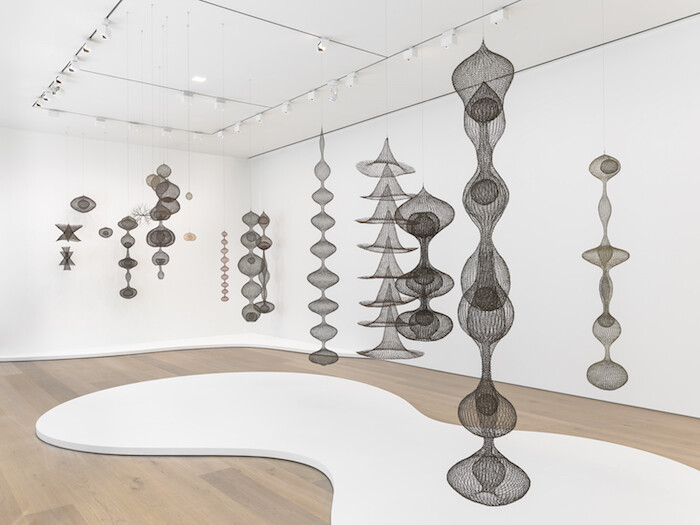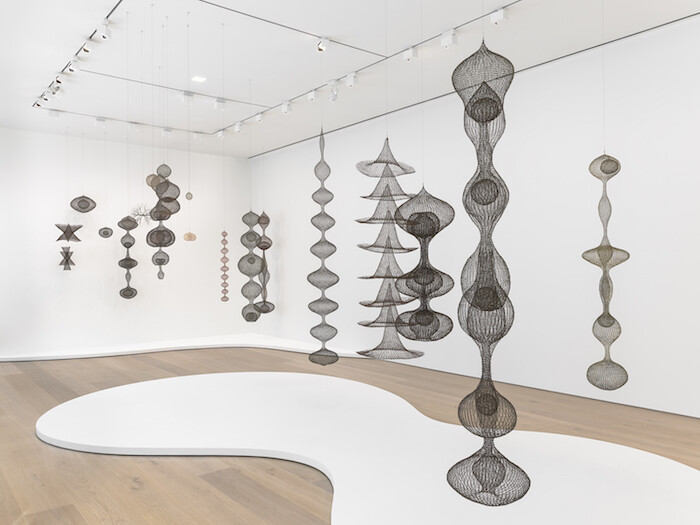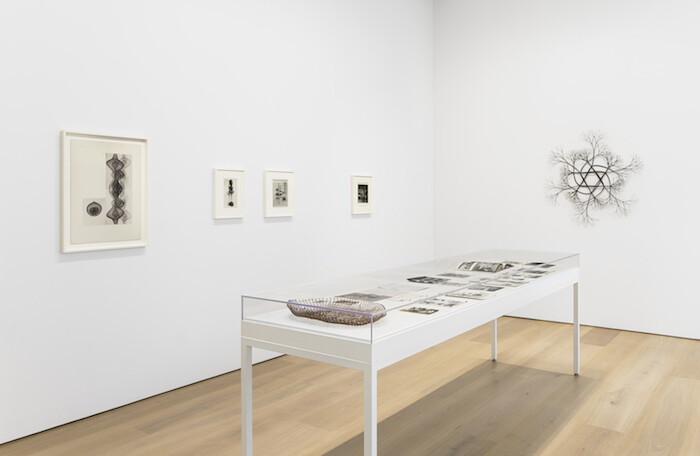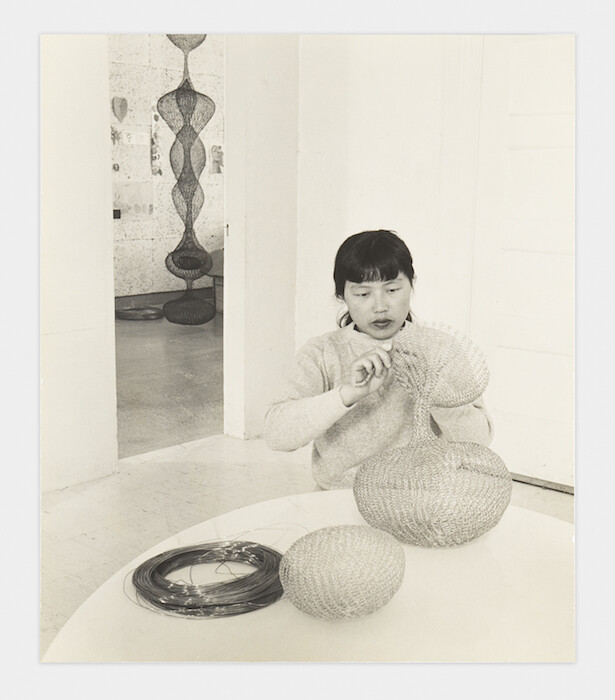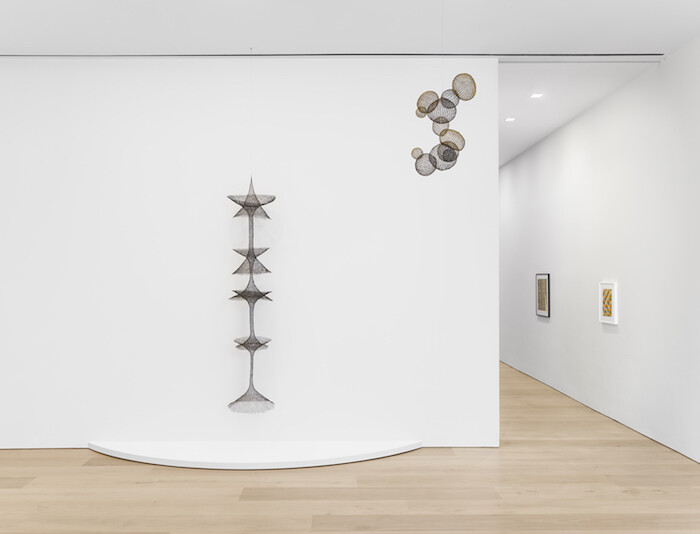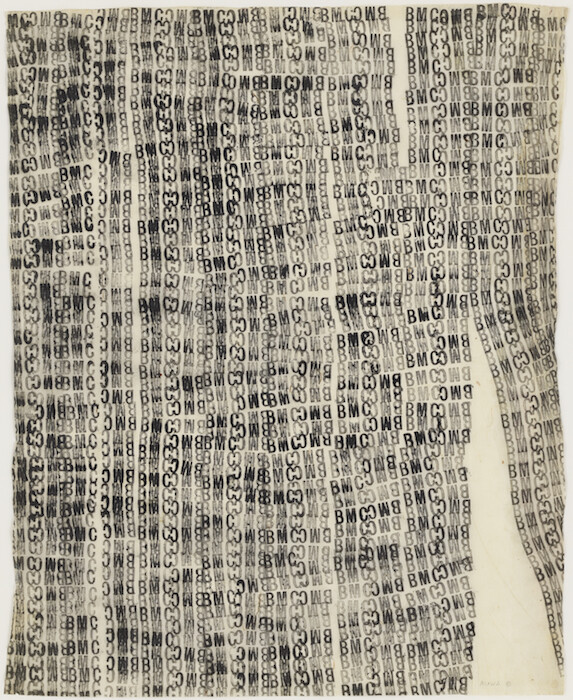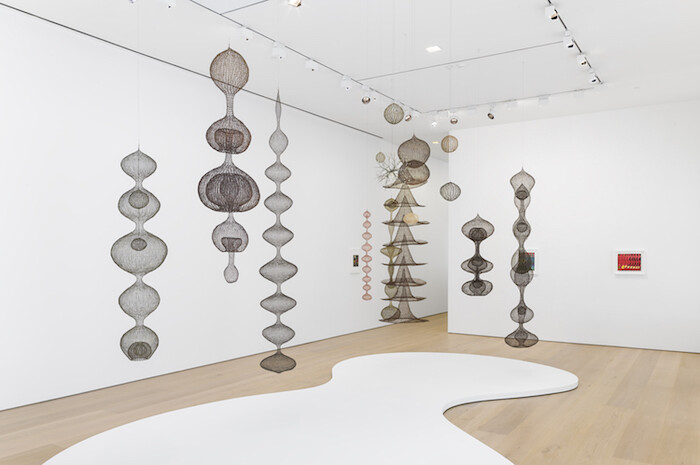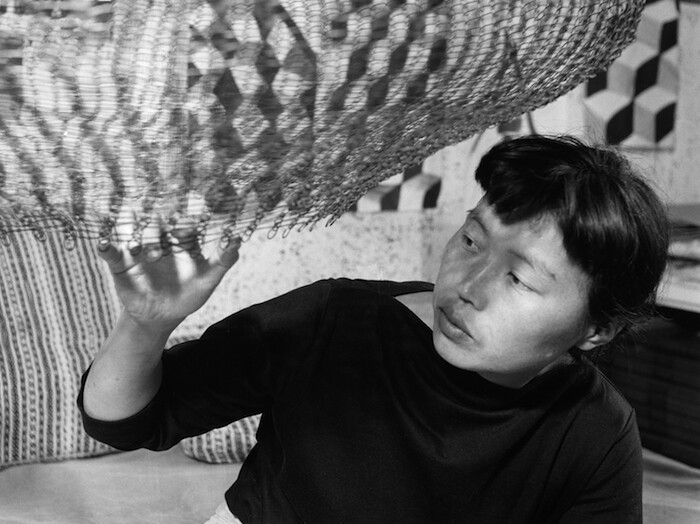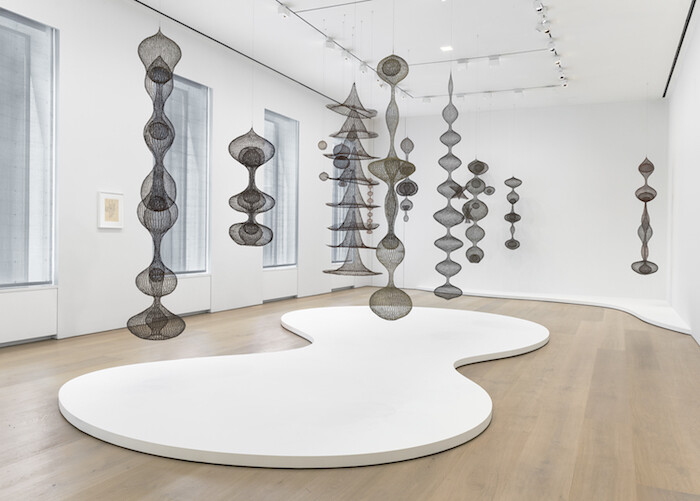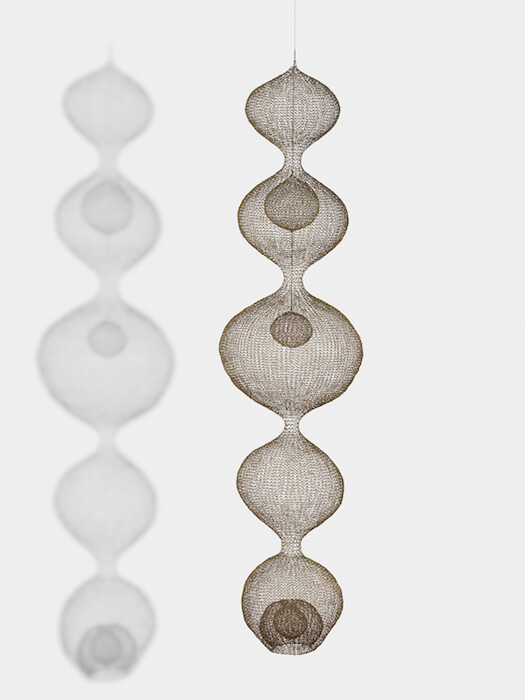September 13–October 21, 2017
One of the three gallery spaces at David Zwirner’s Ruth Asawa exhibition contains a display case featuring archival photographs taken by Imogen Cunningham of the artist in her studio and with her family; an earlier photo of Asawa in class with Josef Albers at Black Mountain College; a letter Asawa wrote to her future husband, architect Albert Lanier, with enclosed drawing; and more. It also features a small color photograph of Asawa in Mexico placed near a flattish, oval basket made of thin, metal wire. This latter, relatively unassuming object, barely highlighted within the overall exhibition, is in fact a key to Asawa’s important art, which until recently has been neglected, despite a scattering of noted shows. Similar to the painter Etel Adnan, who like Asawa lived and exhibited locally in the San Francisco Bay Area for decades, Asawa did not achieve international renown until much later in life. And like Adnan, she was displaced by war.
While a teenager, Asawa was one of the roughly 120,000 Japanese Americans forced by the United States government into internment camps during World War II. Asawa’s father, a farmer in California, was detained first and sent to a separate location; she didn’t see him for six years. Asawa spent nearly a year in camps in California and Arkansas before graduating from high school. Discriminated against at Milwaukee State Teachers College, she found her way to Black Mountain College in 1946. Already producing abstract patterned paintings and works on paper, a few of which are on display at David Zwirner, Asawa learned from weavers in Mexico how to make baskets using wire during a trip there in 1947. Most of the work at David Zwirner’s mini museum-quality exhibition is the result of this formative experience by an artist whose practice combined Mexican craft traditions, European high modernism, and her Japanese American cultural background.
Asawa wove vertically hanging sculptures ranging from ten feet to a few inches made of brass, copper, and iron wire—sometimes oxidized, enameled, or gold-filled—in biomorphic spherical and triangular shapes. (All works are untitled; the entire exhibition ranges from 1946 to 1990.) A few are circular in form, especially the smaller versions, but most are sinewy, sometimes elongated, like interconnected hourglasses or lobes; the triangular ones resemble open cones, and are sometimes stacked, sometimes inverted. Works not made with brass wire tend to be black; only the gold-filled ones might be considered shiny. Asawa delicately embeds forms within forms: a sphere resting with a sphere, an oval within an oval—nurtured yet confined. From a distance her sculptures look a bit like nests, but closer up the metallic materials also evoke a delicate cage. The forms are elastic and meant to reflect nature, yet when near to them, their inorganic materials make them feel slightly cold. One does not need to read these sculptures biographically to see the complexity of influences and experiences at play.
The text next to the basket in the vitrine says that Asawa gave it to Josef and Anni Albers circa 1948–1949, and in interviews Asawa talked about Black Mountain College being a refuge from the racism that for artists like her and Jacob Lawrence existed literally just outside the school’s front door in rural North Carolina and the rest of the United States. At David Zwirner, the first piece greeting visitors is a work on paper that features the letters “BMC” (i.e., Black Mountain College) stamped in vertical rows. Asawa has also mentioned the importance of Josef Albers’s famously rigorous teaching, especially his focus on fundamentals such as the line, and it is possible to see her sculptures as drawings in space, made, as they frequently were, from a single strand of wire. One also imagines that Anni Albers’s important—and still somewhat overlooked—work in textiles must have been influential on Asawa’s sculptures as weavings.
Also featured at David Zwirner are works fashioned into tree branches sprouting into geometric patterns. These pieces perhaps most exemplify Asawa’s wrestling with the container and containment, and with a fusion of the organic and inanimate. They combine the two basic shapes—sphere and triangle—she manipulated in various mediums throughout her life. Installed on the wall and made of wire, but this time collaged and stitched together, the branches radiate from a center that is similarly displaced in the vertically hanging works. The latter, nestled yet floating, are sometimes installed in clusters, particularly the smaller ones, although they usually hang alone. Both the light that filters through them and the shadows they cast are crucial parts of the work, an aspect captured in a few of Cunningham’s photographs and in one of the galleries at David Zwirner featuring natural light. Sewing together disparate elements, Asawa’s sculptural works are fluid within the spaces they uniquely command as if between worlds.
